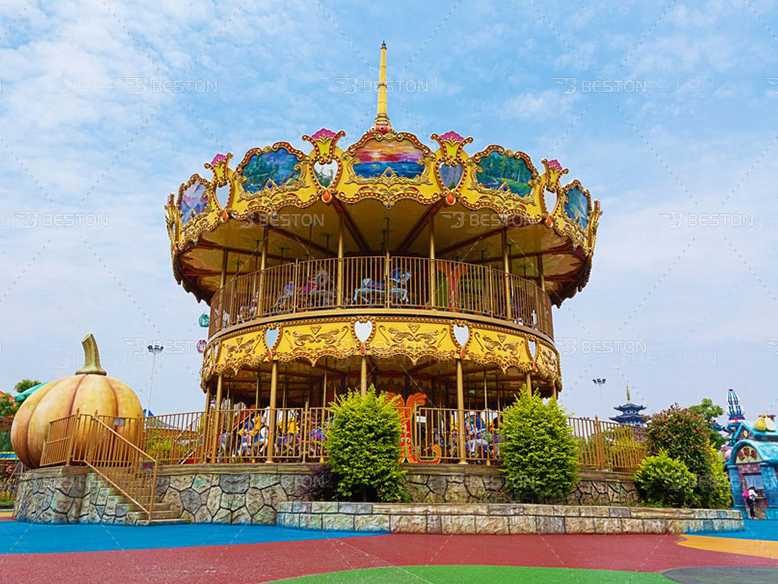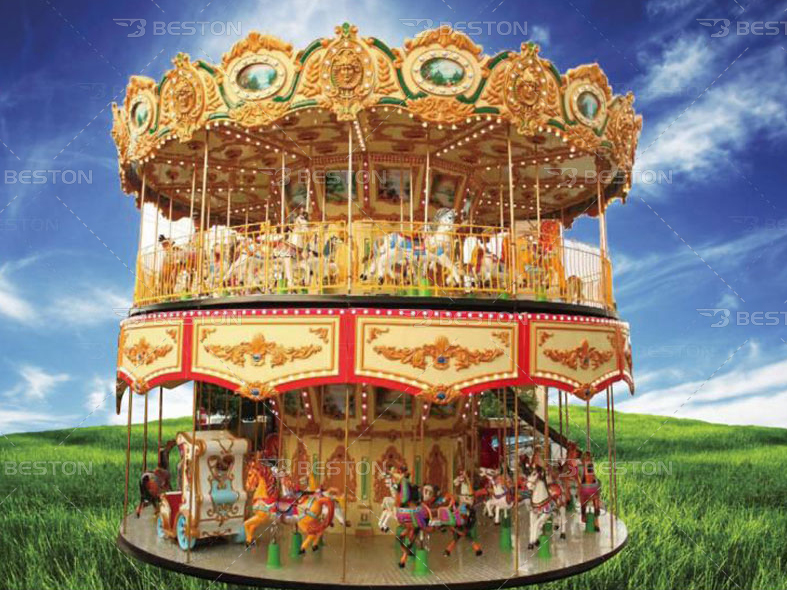Investing in amusement rides, particularly iconic attractions like carousels and Ferris wheels, is a significant decision for any theme park, carnival, or entertainment venue. These rides are not just about providing entertainment; they serve as a focal point of attraction and a critical element in enhancing the guest experience. However, making the right investment requires careful consideration of several factors that can impact both the initial cost and long-term profitability of these attractions. Here are the key factors to consider when investing in park carousels and Ferris wheels.

Understanding the Popularity and Appeal of Park Carousels
The park carousel remains one of the most timeless and beloved amusement rides. It is a fixture in many theme parks, fairs, and family-oriented entertainment venues, appealing to visitors of all ages. When selecting a carousel, it is essential to evaluate the type of ride that aligns best with the intended audience and the park’s overall theme. Working with experienced amusement rides manufacturers can help ensure that the design and functionality of the carousel meet the park’s requirements and exceed guest expectations.
A traditional park carousel typically consists of beautifully crafted, revolving platforms adorned with a variety of animals or vehicles. While they evoke nostalgia, modern carousels often include innovative features that increase their appeal. Some carousels incorporate themed elements, light displays, and interactive designs that heighten the sensory experience for riders. Furthermore, customization options, such as hand-painted details and unique animal designs, can contribute to the distinctiveness of the attraction.
Additionally, the size and scope of the carousel should align with the space available within the park and the expected visitor traffic. Smaller, single-story models may suffice for compact parks or smaller venues, while larger, more elaborate designs may be suitable for large theme parks or entertainment complexes. When considering the investment, it is important to strike a balance between attracting large numbers of visitors and ensuring that the ride fits within the available footprint of the venue. Partnering with amusement rides manufacturers that offer customizable and scalable carousel designs can provide flexibility in meeting the specific needs of different park sizes and themes.
The Growing Popularity of the 2-Story Carousel
In recent years, 2 story carousel designs have become increasingly popular due to their ability to enhance both the visual appeal and capacity of the ride. These multi-level structures not only offer a unique and immersive experience but also increase the ride’s throughput by accommodating more guests per cycle. This is especially advantageous in high-traffic areas where demand for popular rides is high.
A two-story carousel adds an element of novelty, offering riders the experience of riding at different heights. The design is typically more intricate and visually striking, often incorporating elaborate lighting systems and larger-than-life, whimsical animals. The additional capacity allows parks to cater to a larger audience, providing more opportunities to generate revenue. However, it is crucial to ensure that such a ride fits within the park’s overall aesthetic and theme.
The 2 story carousel can also offer a higher return on investment (ROI) for operators. While the initial construction and installation costs may be higher compared to a traditional single-level carousel, the increased throughput and extended operational hours make it a financially viable option for large-scale parks. It is important to consider the maintenance costs associated with multi-story designs, as they may require more intricate upkeep than simpler models.

Collaborating with Amusement Rides Manufacturers
The choice of amusement rides manufacturers is critical when investing in carousels and Ferris wheels. Not all manufacturers are created equal, and selecting a reputable supplier is essential to ensure the highest standards of safety, quality, and durability. Established manufacturers are more likely to provide superior craftsmanship, advanced engineering, and reliable customer support, ensuring that your investment is both safe and long-lasting.
When evaluating manufacturers, consider their track record of producing high-quality, safe rides that comply with industry standards and regulations. Ideally, manufacturers should offer a range of customization options to meet the specific needs of the park. This includes design alterations, color schemes, themed elements, and special features such as lighting and sound effects. Furthermore, working with experienced manufacturers can help in understanding factors like Ferris wheel cost, which can vary based on the size, features, and complexity of the design. A reputable manufacturer will be transparent about pricing and help you understand the cost breakdown, ensuring there are no surprises in your budget.
Additionally, it is important to assess the manufacturer’s reputation for post-purchase support, such as installation services, maintenance training, and spare parts availability. Long-term service agreements can help ensure that the rides are properly maintained and that downtime is minimized, contributing to sustained profitability.
Evaluating the Ferris Wheel Cost
The ferris wheel cost is another major factor to consider when investing in one of the most iconic amusement rides. Ferris wheels are a standout attraction in many parks and offer an incredible vantage point for guests to enjoy panoramic views of the surrounding area. However, the cost of acquiring and installing a Ferris wheel can vary widely based on factors such as size, capacity, and location.
The cost of a Ferris wheel is typically influenced by several key considerations:
- Size and Height: Larger Ferris wheels with greater height and capacity generally have a higher price tag. These larger structures require more engineering, materials, and complex installation procedures.
- Materials and Design: The choice of materials used in constructing the Ferris wheel can impact the cost significantly. Premium materials such as stainless steel, glass, and high-quality coatings can increase the overall cost but also enhance the aesthetic appeal and durability of the structure.
- Location and Infrastructure: The location where the Ferris wheel will be installed plays a critical role in the cost. If the park is located in a region with strict regulations or difficult terrain, installation costs can increase. Additionally, considerations like land preparation, foundation work, and logistical challenges add to the total investment.
- Customization: Ferris wheels can be customized with features like themed gondolas, lighting effects, and audio systems. These add-ons enhance the guest experience but can also increase the upfront cost. Operators should evaluate whether these additional features align with their overall theme and brand identity.
Despite the potentially high cost, Ferris wheels have long-lasting appeal and can be a major revenue generator due to their popularity. They attract visitors with their grandeur and offer a unique experience that appeals to guests of all ages. Over time, the initial investment can be recouped through ticket sales and the increased foot traffic they generate for the park.
Maintenance and Lifespan Considerations
Once the carousel or Ferris wheel is purchased, it is essential to consider its long-term maintenance and operating costs. Both carousels and Ferris wheels require regular inspections, mechanical maintenance, and safety checks to ensure they remain in optimal working condition. Inadequate maintenance can lead to breakdowns, safety issues, and costly repairs, which could impact the park’s reputation and revenue.
The lifespan of these rides depends on various factors, including the quality of the materials used, frequency of use, and the climate in which they are located. Ferris wheels, for example, are designed to withstand heavy winds and extreme weather conditions, but they still require regular inspections to ensure the structural integrity of the frame and the safety of the gondolas. Similarly, carousels should be regularly checked for wear and tear on the motor, ride mechanisms, and safety systems.
Conclusion
Investing in a park carousel or ferris wheel is a substantial financial commitment that requires thorough planning and consideration. By evaluating factors such as the type and size of the ride, the reputation of amusement rides manufacturers, customization options, and maintenance costs, operators can make informed decisions that enhance their park’s overall experience and profitability.
Both carousels and Ferris wheels have enduring appeal, offering guests memorable experiences and a unique sense of adventure. With the right investment strategy and a focus on quality, these iconic rides can be a cornerstone of any successful amusement park or entertainment venue.